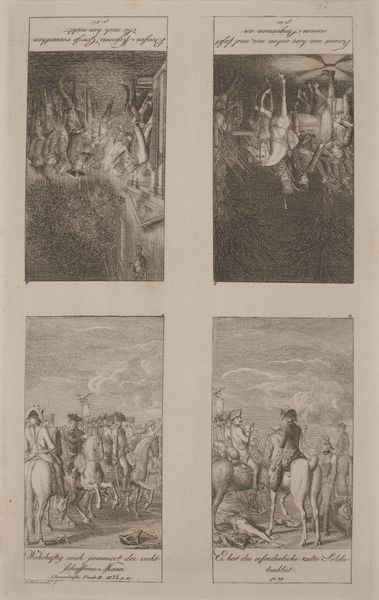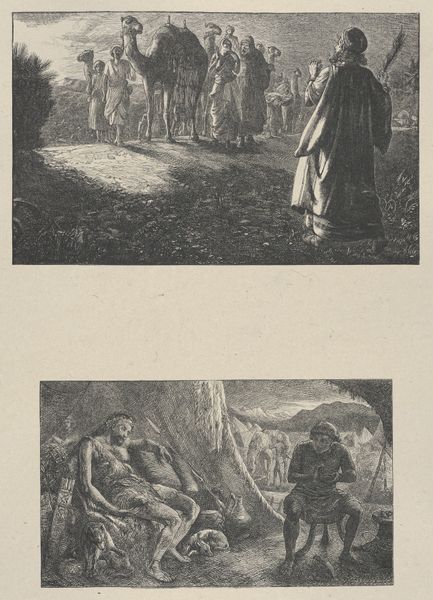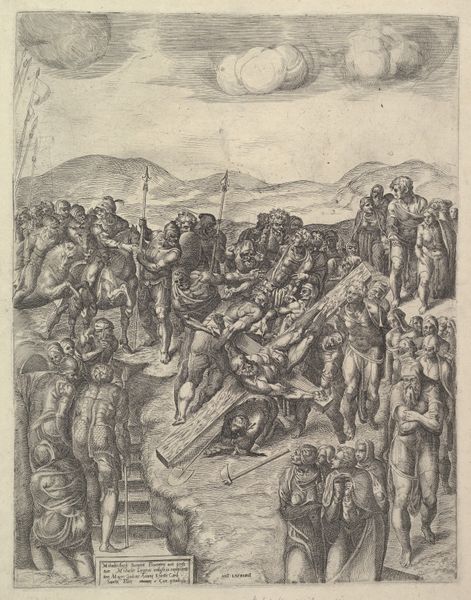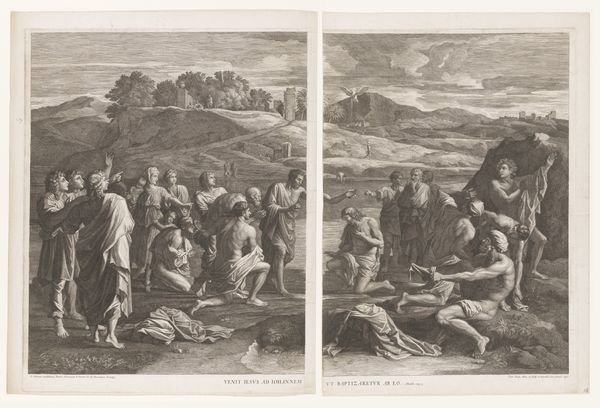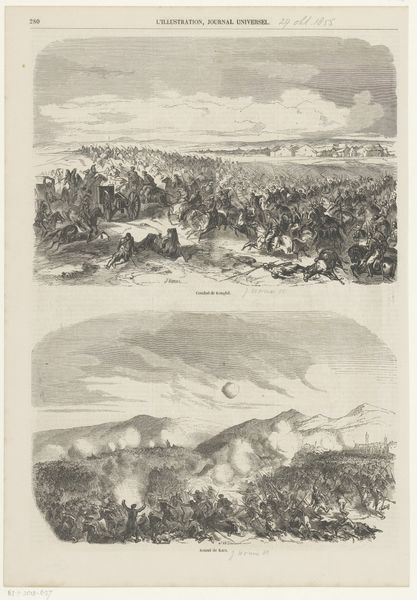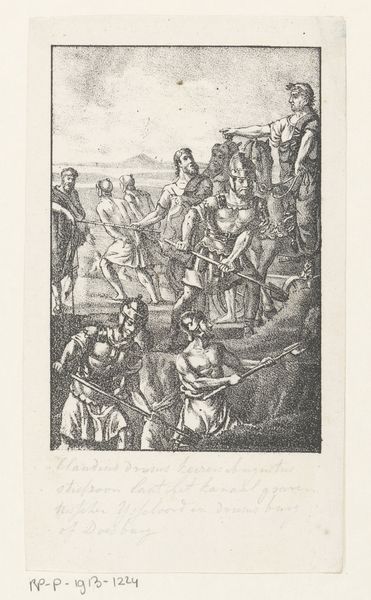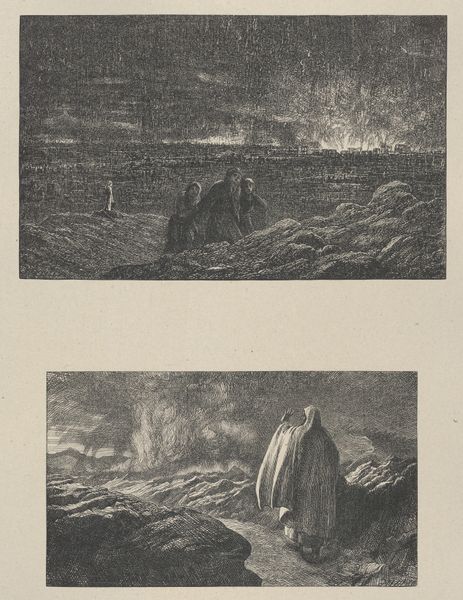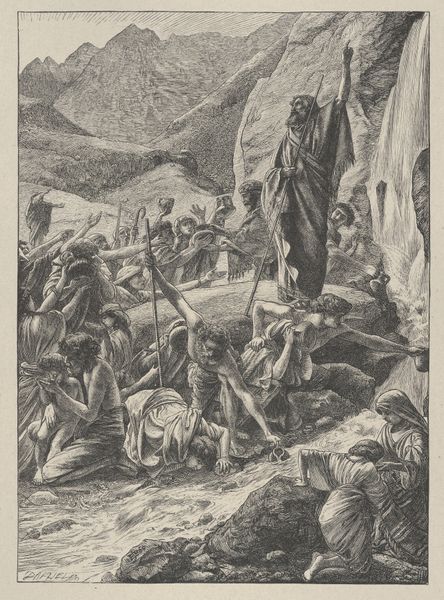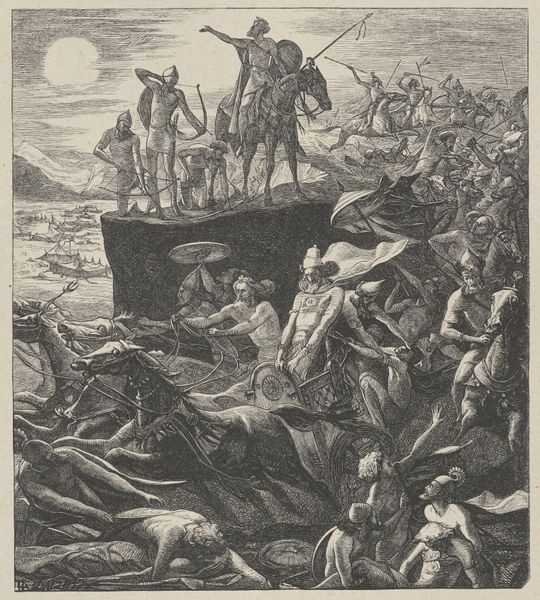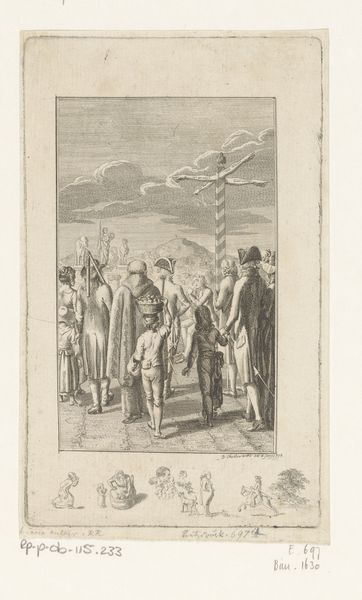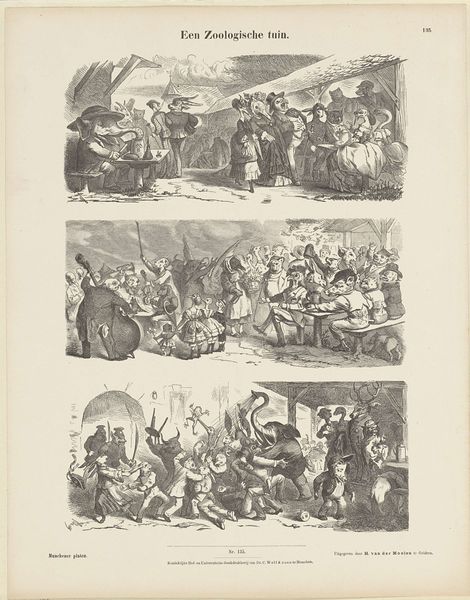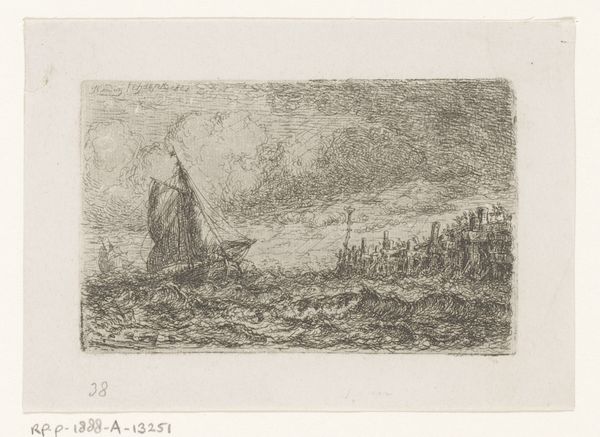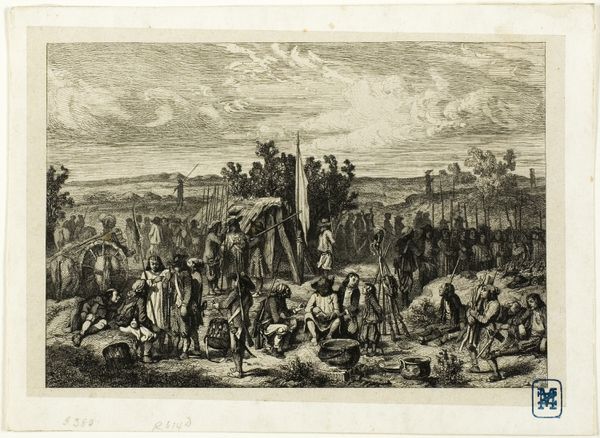
The Departure of the Israelites–Destruction of Pharoah and His Host, from "Dalziels' Bible Gallery" 1865 - 1881
0:00
0:00
drawing, print
#
pencil drawn
#
drawing
#
light pencil work
#
animal
# print
#
pencil sketch
#
sketch book
#
personal sketchbook
#
pencil drawing
#
pen-ink sketch
#
sketchbook drawing
#
pencil work
#
sketchbook art
Dimensions: Image: 3 7/16 × 6 15/16 in. (8.8 × 17.7 cm) Image: 3 7/16 × 6 15/16 in. (8.8 × 17.7 cm) India sheet: 10 1/2 in. × 9 in. (26.6 × 22.8 cm) Mount: 16 3/8 in. × 12 15/16 in. (41.6 × 32.9 cm)
Copyright: Public Domain
Curator: We're looking at "The Departure of the Israelites–Destruction of Pharaoh and His Host" from "Dalziels' Bible Gallery," dating from 1865 to 1881, currently held at The Metropolitan Museum of Art. Editor: It's intensely dramatic. The stark contrast between light and shadow evokes such a palpable sense of dread and overwhelming force. The pencil work looks very tight and meticulous. Curator: Precisely. The composition is essentially divided into two registers. The upper portion depicts the Israelites' exodus, while below, Pharaoh's army succumbs to the Red Sea's turbulent waves. This separation is critical to understanding the work’s overall meaning and structure. Editor: Indeed, it visually encapsulates the dichotomy of salvation and destruction. The figures, particularly in the upper register, appear almost spectral, like souls being released. The animals, or the remains of the animals are almost buried with all of the Pharaohs troops. The way the pencil shading defines the form. Are we intended to draw connections? Curator: Undoubtedly. The iconographic symbolism is quite layered. The sea, frequently associated with chaos and primordial darkness, acts here as an instrument of divine judgment. And it also a means to redemption as well, perhaps as a visual of re-birthing. It’s not unlike ancient Babylonian symbol where the Sea is defeated and the “bad” things can finally flourish, this appears to visually play along similar beliefs. Editor: And note the visual weight of the darkness above the sea. The contrast suggests the absolute power, doesn’t it? And consider the symbolic import of drowning, the literal submersion of earthly power in the face of divine will. Curator: Furthermore, let us address the aesthetic treatment. It appears to resemble more of pen-ink sketches and drawings you may come across in a sketch book. One wonders about the creative decisions and what inspired such stylistic direction. How can we better address these components through visual understanding. Editor: Looking again at how light is rendered. We must also remember how the power of God over everything plays an ultimate signifier in all of it, because light is goodness as understood across religions and cultures, not simply in Judeo-Christian history. Curator: I concur. It is an excellent lesson into both divine and aesthetic construction, so much more to consider when viewing biblical illustration. Editor: Yes, so very evocative; Dalziel encourages us to consider multiple stories both formal and symbolic.
Comments
No comments
Be the first to comment and join the conversation on the ultimate creative platform.
